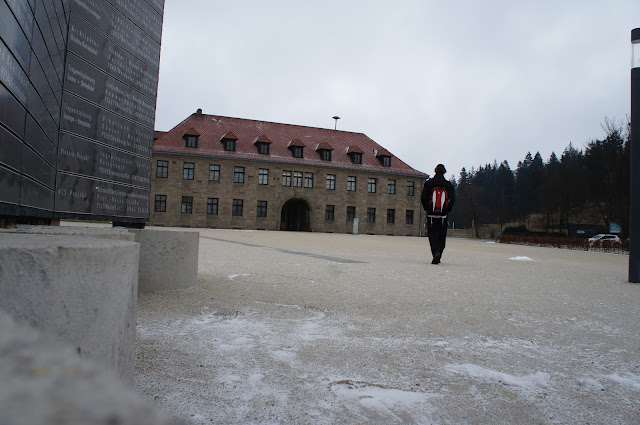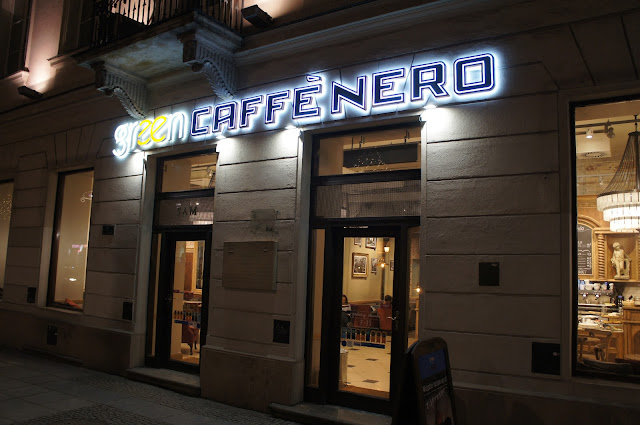JACOB JR, MY JEWISH WORLD. KONZENTRATIONSLAGER FLOSSENBÜRG/GERMANY
Sunday, Tevet 17, 5777. January 15, 2017.
Shalom! World.
The Konzentrationslager Flossenbürg/Germany.
 The Konzentrationslager Flossenbürg was established in May 1938 during the SS reorganization of the entire concentration camp system. In the new system, the purpose of the camp was no longer only to imprision and terrorize political opponents of the Nazi regime. Rather, the SS now also aimed to profit from the exploitation of prisoner labor. Prisoners were put to work in SS-owned economic enterprises for the production of building materials. To this end, the SS founded new camps, and deported ever larger numbers of people to the camps.
The Konzentrationslager Flossenbürg was established in May 1938 during the SS reorganization of the entire concentration camp system. In the new system, the purpose of the camp was no longer only to imprision and terrorize political opponents of the Nazi regime. Rather, the SS now also aimed to profit from the exploitation of prisoner labor. Prisoners were put to work in SS-owned economic enterprises for the production of building materials. To this end, the SS founded new camps, and deported ever larger numbers of people to the camps. The construction of new camps began in 1936-37 with the founding of the Sachsenhausen and Buchenwald camps. SS economic interests played an increasing role in the selection of new camp sites. The large granite deposits around Flossenbürg attracted the attention of the SS.
The decision on the Flossenbürg site was reached in March 1938. The first SS guards arrived in late April. On May 3, the first transport of 100 prisoners arrived at the construction site from the Dachau concentration caamp. By the end of 1938, the initial intake of the camp had increased to 1.500 prisoners.
The first non-German prisoners - Czechs
In January 1940, the first non-German prisoners arrived at the Flossenbürg concentration camp. They were Czech students who had been imprisoned at the Sachsenhausen concentration camp for participating in protests against the German occupation in Praha and Brno. Several weeks later, the number of Czech prisoners at KZ Flossenbürg again increased. During their search for the resistance fighter Jan Smudek, the Gestapo arrested 150 young men in the western Bohemian town of Taus (Domazlice). The SS took the young men as hostages in order to crush resistance in the "Protectorate of Bhoemia and Moravia." These were the first prisoners to be interred directly in Flossenbürg without first spending time in another concentration camp.
 |
| Jan Belacek, Police Record Department photograph from the Flossenbürg concentration camp Political Division (Gestapo), 1940. |
The Jews
"The biggest problem that we had as Jews in Flossenbürg was that the Kapos who were responsible for the blocks and for the work were Germans who had been sent to the camps as criminals. They took their rage out on us and enjoyed beatings and killing. The Nazis in charge praised them for this and gave them extra premium coupons. Many of us were killed by these people." Mark Stern, at the KZ Flossenbürg beginning August 1944.
Anti-Semitism was a central element of National Socialist ideology, which constructed the Jews as an "inferior race." The Nazis began to strip Jews of their rights immediately after the seizure of power. Step by step, Jes were excluded from public life in Germany. The "Nuremberg Laws" made them into second-class citizens. From 1941 on, the German leadership organized the systematic annihilation of the European Jews: widespread deportations, forced labor in ghettos and camps, mass shootings, and transports to the death camps (Vernichtungslager). Approximately six million Jews fell victim to the National Socialist genocide. Relatively few Jews were interned in the Flossenbürg concentration camp at first. But from August 1944 0n, thousands of Jewish men and women were transported to Flossenbürg from the camps in eastern Europe. In the final year of the war, Jews made up the largest gorup of prisoners with over 22,000 inmates. Over 3.000 Jewish inmates died. 9.801 from Hungary , 9.779 from Poland, 686 from Bohemia and Moravia, 532 from Germany and Austria, 352 from Greece, 285 from France, 273 from Slovakia, 224 from Netherlands, 207 from Lithuania, 133 from Italy, 98 from the Soviet Union, 92 from Belgium, 400 from others countries.
The Jews Czechs
In March 1939, German troops occupied the Czech part of Czechoslovakia. The area was declared the "Reich Protectorate of Bohemia and Moravia." "The occupiers tried to crush the resistance of the population with all available means. Following the assassination of Deputy Reich Protector Reinhard Heydrich in May 1942, the Germans intensified the terror. Tens of thousands of Czech were placed inn concentration camps. From January 1940 on, Czechs were also imprisoned in the Flossenbürg concentration camp. They were the first foreign prisoners. Over 3.800 Czechs were registered through 1945. 700 of them were of Jewish descent, including 400 women. A fifth of all Czech prisoners died.
The Jews Polish
On January 23, 1941, a transport of nearly 600 Jews Polish prisoners arrived at the KZ Flossenbürg from Auschwitz. On February 6, the SS began the targeted annihilation of part of this group. Within six months, the SS had killed more than 200 Jews Polish males, both youngs and adults. After the evening roll call, the prisoners selected for execution were brought to the detention barrack, where they spent their final night. The following morning, they were taken next to the crematorium and shot by execution commando. The reason behind these executions remains unknown. Starting with murders of these Jews Polish inmates, the Flossenbürg concentration camp became a place where specific groups of prisoners were singled out for execution.
The Death March
On April 13, 1945, the Helmbrechts women's subcamp was evacuated. Shortly before, a transport of 621 Jewish women had arrived from the Gross-Rosen concentration camp. SS commando leader Dörr ordered nearly 1.200 women to march in the direction of the Zwodau subcamp. He subjected suffering. The first woman died after only a few kilometers. In Zwodau, Dörr left the non-Jewish prisoners behind, gathering the Jewish women incarcerated at the subcamp for transport. Over 700 Jewsih women were herded further south. On May 4, near the Bohemian town of Prachatiz (Prachatice), the SS abandoned the marchers. Here and in the neighbooring town of Wallern (Volary), US troops liberated 270 completely emaciated Jewish girls and women. They also found many dead.
The Liberation of the Main Camp
In the morning of April 23, 1945, members of the 90th US Infantry Division arrived at Flossenbürg. Approximately 1.500 critically ill prisoners and many dead were in the camp. The prisoners greeted their liberators with a banner, "Prisoners Happy End! Welcome!"
US soldiers were shocked at the sight of the "living skeletons" and the mountains of corpses. Hastily summoned military physicians immediate medical assistance. Nonetheless, many prisoners survived their lliberation only by a few hours.
Between 1938 and 1945, the SS imprisioned about 100.000 people at the KZ Flossenbürg. At least 30.000 prisioners died at the camp. The camp had originally been established by the SS leadership as a source of forced prisioners labor in the nearby granite quarries.
After 1943, the camp became an armaments production site. Prisioners carried out forced labor assembling aircraft parts for the Messerschmitt company. At that time, a system of nearly 90 sub-camps was also established, which extended across Bavaria, Bohemia and Saxony. When U.S. troops liberated the camp on April 23, 1945, they found only 1.500 critically ill and malnourished prisioners in the camp. All the others prisioners had been herded by the SS onto death marches toward the south.
In the years following 1945, much of the former concentration camp and the camp grounds was successively repurposed, demolished, or built over. In 1946, one of the first concentration camp memorial sites in Europe was established on the site. A cemetery was added to the Memorial grounds in the late 1950s, and a small exhibition was established at the site in 1985. A few years ago, the former roll call grounds, which had been used as an industrial area for more than five decades, became part of the memorial site.
The rediscovery of Flossenbürg as a place of European remembrance culminatedin the 2007 opening of the eprmanent exhibition "The Flossenbürg Concentration Camp 1938 - 1945" in the former laundry building. In 2010, a second permanent exhibition titled "what remains - The Aftermath of the Flossenbürg Concentration Camp" opened inn the former camp kitchen.
Shalom! Aleichem.
Suporte cultural: Jacob Jr. B.A.C.E., avec L'Integration d'Association avec Israel et dans le Monde/Cz.


















Comments
Post a Comment